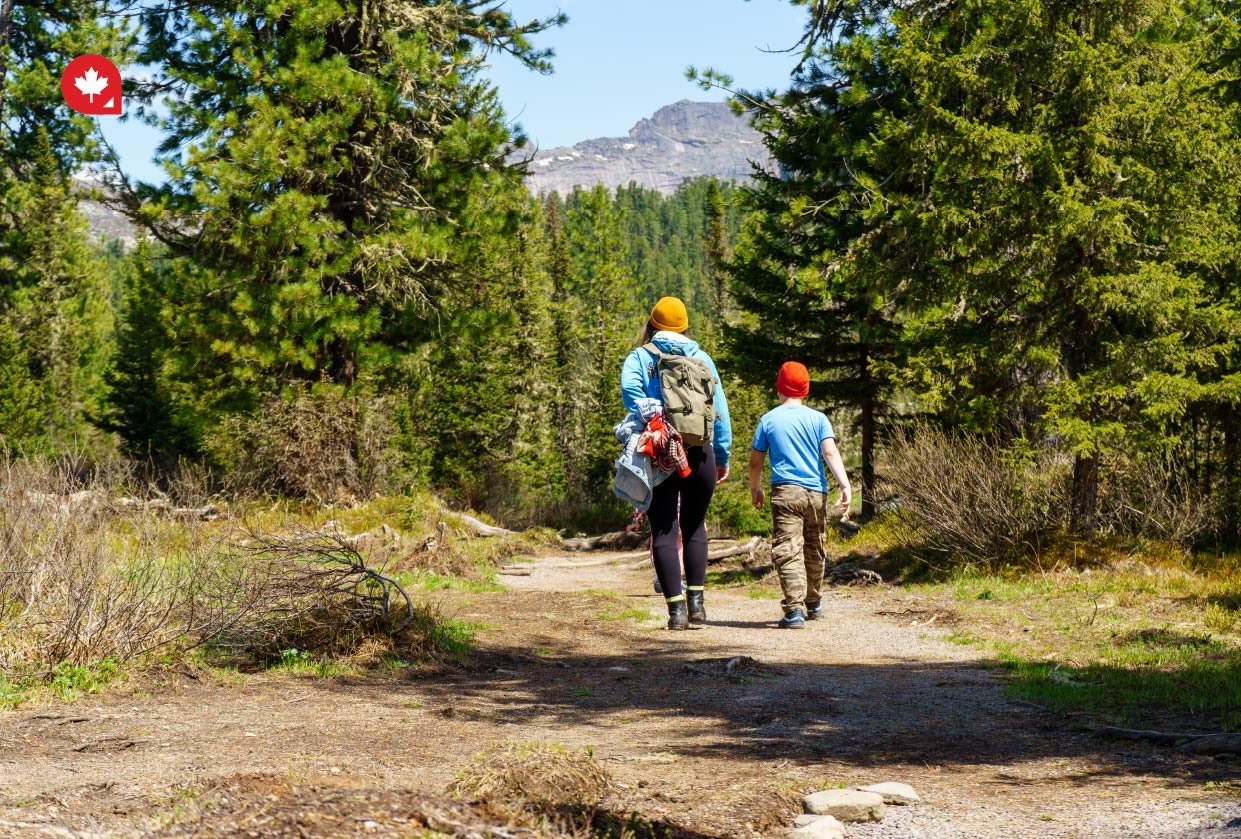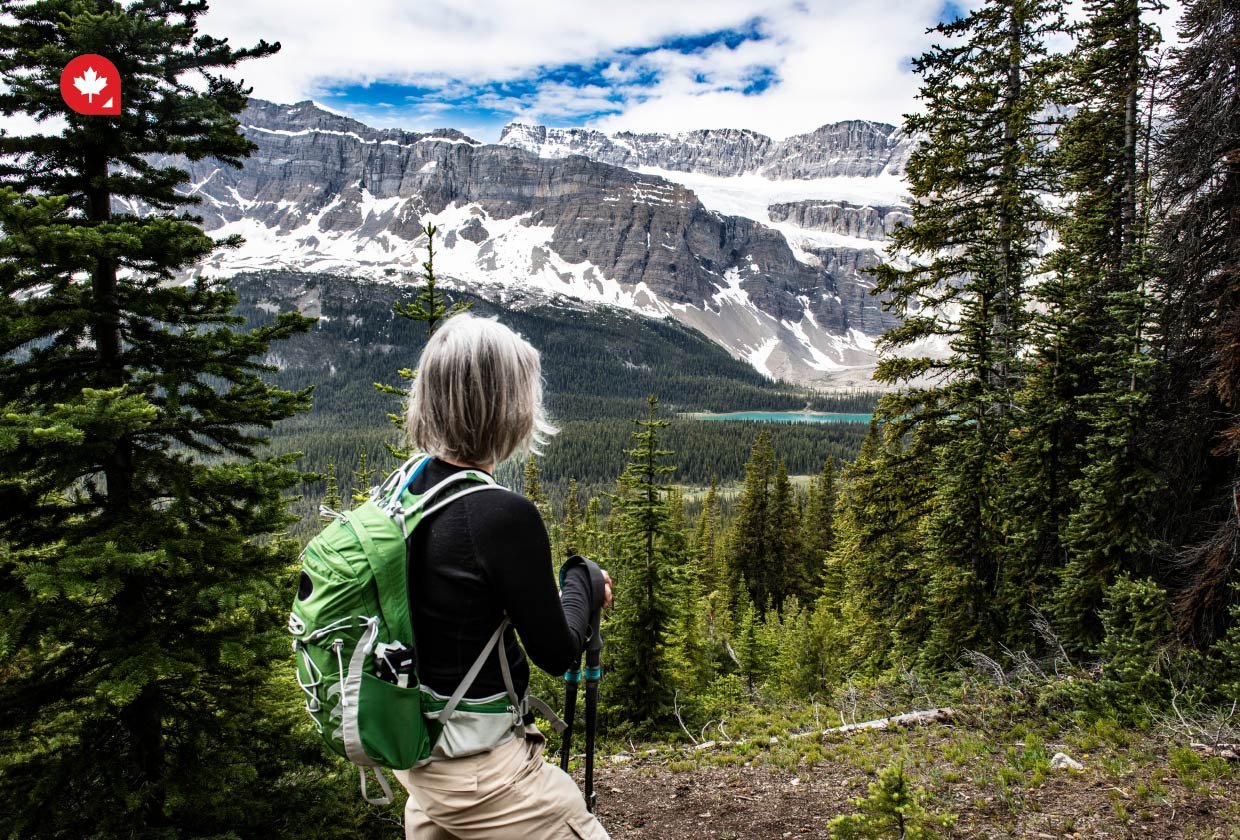Spanning from the rugged coastlines of the Pacific to the peaks of the Rockies and the expansive boreal forests of the north, Canadian national parks offer a diverse number of natural wonders to explore. From hiking and camping to wildlife watching and photography or simply experiencing the thrill of encountering iconic wildlife such as grizzly bears, Canadian national parks promise unforgettable experiences should you decide to visit Canada.
Are you ready to learn more about Canadian National Parks? Then, take a look at our list of Canadian national parks, which are full of untamed beauty and wilderness, and adventure awaits at every turn.
What Are Canadian National Parks?

Vast and stunning, Canada's national parks encompass over 336,000 square kilometers, protecting diverse ecosystems across all provinces and territories. These wild places in every province and territory range from mountains and plains to boreal forests and tundra, lakes and glaciers, and much more.
There are 37 national parks in Canada, representing 31 of Canada's 39 terrestrial natural regions. Parks Canada is responsible for protecting and managing these areas so visitors can understand, appreciate, and enjoy them in a way that doesn't compromise their ecological integrity.
Which Are the Top 5 Canadian National Parks Can I Visit?

Choosing the top 5 depends on your adventure preferences, but here's a detailed look at some of the most popular options, each offering a unique experience.
Banff National Park, Alberta
Located in the heart of the Canadian Rockies, Banff National Park is Canada's most renowned national park. Towering peaks like Mount Cascade and Mount Assiniboine pierce the sky, while turquoise glacial lakes like Moraine Lake and Lake Louise reflect their majesty. The park is a haven for wildlife, with sightings of elk, grizzly bears, and even wolves a possibility.
You can take a scenic gondola ride up Sulphur Mountain for panoramic views of the surrounding peaks and valleys. Relax and soak in the natural hot springs at Banff Upper Hot Springs, a historic landmark. Canoe or kayak on the serene waters of Lake Louise in the summer, or try stand-up paddle-boarding. Winter brings world-class skiing and snowboarding opportunities at Lake Louise Ski Resort and Sunshine Village.
Jasper National Park, Alberta
Jasper National Park, Canada's largest national park, offers a vast and pristine wilderness experience. Glaciers cling to the peaks of the Canadian Rockies, while Maligne Lake, one of the most photographed lakes in the world, reflects the surrounding beauty. The park is a UNESCO World Heritage Site and boasts the Columbia Icefield, the largest non-polar icefield in North America.
Take a hike or bike along scenic trails like the Maligne Lake Skyline Trail or the Cavell Meadows Trail, offering breathtaking panoramas. Keep your eyes ready to spot moose, elk, bighorn sheep, and bears that roam freely within the park. Paddle down the Athabasca River, experiencing the thrill of whitewater rapids. You can relax in the park's natural environment by choosing among the various campgrounds catering to tent and RV campers.
Gros Morne National Park, Newfoundland and Labrador
Gros Morne National Park, a UNESCO World Heritage Site, showcases a dramatic landscape sculpted by glaciers over a thousand years. Fjords, towering cliffs, and unique geological formations like the Tablelands, a barren plateau with an otherworldly landscape, define the park's natural character.
Go on a hike on the challenging Long Range Trail, a 235-kilometer backpacking route offering stunning coastal and mountain views. Paddle the fjords, explore hidden coves and inlets, and encounter marine life like whales and seals. Go on a boat tour to get a closer look at the dramatic coastline and learn about the park's geology. If you’re a bird watcher, Gros Morne is a haven, with puffins, eagles, falcons, and various songbirds calling the park home.
Yoho National Park, British Columbia
Yoho National Park, situated in the Canadian Rockies alongside Banff National Park, is known for its emerald lakes, cascading waterfalls, and towering peaks. Emerald Lake, Kicking Horse Pass, and Takakkaw Falls, the second-highest waterfall in Canada, are some of the park's most iconic landmarks.
Take the opportunity to explore the park's diverse trails, from the easy Emerald Lake Loop to the challenging Emerald Glacier Hike, offering stunning views of glaciers. In the park, observe bighorn sheep, mountain goats, grizzlies, and black bears. You can explore the park on horseback, a unique way to experience the backcountry and observe wildlife.
Fundy National Park, New Brunswick
Fundy National Park, located along the Bay of Fundy, boasts the world's highest tides. This unique ecosystem offers dramatic cliffs, long sandy beaches, and the chance to witness the power of nature firsthand. The park also protects a portion of the Appalachian Mountains and the world's most extensive contiguous area of salt marshes.
Go hiking the park's extensive trail network, including the Fundy Footpath, offering stunning coastal vistas. Take a stroll along the exposed sandy beaches during low tide and uncover treasures like seashells and interesting marine life. Paddle on the calm waters of the Bay of Fundy, exploring hidden coves and inlets. During high tide, kayak along the base of the cliffs for a unique perspective. View waterfalls like Dickson Falls and Mary Ann Falls, which are surrounded by lush forests and offer opportunities for refreshing dips.
List of Canada’s Other National Parks
Here is a list of Canada's other National Parks per province or territory, including only Parks Canada administered locations and places.
| List of Canadian Provinces or Territory | Canadian National Parks |
|---|---|
| Alberta | Elk Island National Park of Canada, Wood Buffalo National Park of Canada, Waterton Lakes National Park of Canada |
| British Columbia | Glacier National Park of Canada, Gulf Islands National Park Reserve of Canada, Gwaii Haanas National Park Reserve, Kootenay National Park of Canada, Mount Revelstoke National Park of Canada, Pacific Rim National Park Reserve of Canada |
| Manitoba | Riding Mountain National Park of Canada, Wapusk National Park of Canada |
| New Brunswick | Kouchibouguac National Park of Canada |
| Newfoundland & Labrador | Terra Nova National Park of Canada, Torngat Mountains National Park of Canada |
| Northwest Territories | Aulavik National Park of Canada, Tuktut Nogait National Park of Canada |
| Nova Scotia | Cape Breton Highlands National Park of Canada, Kejimkujik National Park of Canada |
| Nunavut | Auyuittuq National Park of Canada, Qausuittuq National Park of Canada, Quttinirpaaq National Park of Canada, Sirmilik National Park of Canada, Ukkusiksalik National Park of Canada |
| Ontario | Bruce Peninsula National Park of Canada, Georgian Bay Islands National Park of Canada, Point Pelee National Park of Canada, Pukaskwa National Park of Canada, Thousand Islands National Park of Canada |
| Prince Edward Island | Prince Edward Island National Park of Canada |
| Quebec | Forillon National Park of Canada, La Mauricie National Park of Canada, |
| Saskatchewan | Grasslands National Park of Canada, Prince Albert National Park of Canada |
| Yukon | Ivvavik National Park of Canada, Vuntut National Park of Canada |
How Can I Visit Canadian National Parks?

Proper planning is key to your national park adventure in Canada. Here's a breakdown of the Canadian immigration visas you can apply for your visit to Canada’s national parks.
Canada Visitor Visa
Visiting Canadian national parks involves navigating a few key considerations, especially for international travelers. For most visitors, securing a valid Canada Visitor Visa is essential. This visa allows entry into Canada for tourism purposes and is typically required unless exempted under specific circumstances. You must meet the outlined criteria for a Canada Visitor Visa, including proving your ties to your home country, providing sufficient funds for your stay, and intentions to return home after your visit to Canada.
Find out everything you need to know about Canada’s Tourist Visa.
IEC Working Holiday
If you’re between 18 and 35 and a citizen of an eligible country, the International Experience Canada (IEC) Working Holiday Visa program is a popular option for visiting Canada. This program facilitates travel and visiting opportunities for foreign youth who wish to temporarily live and work in Canada, including within its national parks. You can engage in various jobs, from hospitality to outdoor guiding, while exploring the natural beauty of Canadian landscapes during your free time.
Learn how to prepare for your Working Holiday in Canada.
If You’re From a Visa-Exempt Countries
Citizens from visa-exempt countries can usually enter Canada for short stays, typically up to 6 months, with a valid passport and Electronic Travel Authorization (eTA). Apply online well in advance, ideally at least 72 hours before your flight, through the official Immigration, Refugees, and Citizenship Canada (IRCC) site.
The application process is straightforward and requires basic information like passport details and travel plans. A valid eTA is typically linked electronically to your passport and remains valid for up to five years or until your passport expires.
Purchasing a Park Pass
Once in Canada, accessing the national parks typically requires purchasing a parking pass. Parks Canada offers various pass options, including daily, annual, and Discovery Passes, which provide entry to multiple national parks. Each pass contributes to the maintenance and conservation efforts of these protected areas.
FAQs
What Activities Can I Do in Canadian National Parks?
In Canadian national parks, you can enjoy various activities such as hiking through scenic trails, wildlife watching, including bears and moose, camping under the stars, canoeing on pristine lakes, and even skiing or snowshoeing in winter months.
Learn more about the outdoor activities in Canada.
When is the Best Time to Visit Canadian National Parks?
The best time to visit Canadian national parks depends on your interests and the region. Generally, summer offers ideal weather for outdoor activities like hiking and camping, while winter transforms parks into snowy wonderlands perfect for skiing and enjoying serene landscapes.
Learn how to have fun and budget-friendly winter activities in Canada.
Can I Bring My Pet to Canadian National Parks?
Yes, you can bring your pet to visit Canadian national parks, but they are typically restricted to certain areas such as campgrounds, paved pathways, and designated pet-friendly zones. It's important to check and adhere to specific park regulations regarding pets to ensure a safe and enjoyable visit for all.
Learn more about moving to Canada with your pet.



